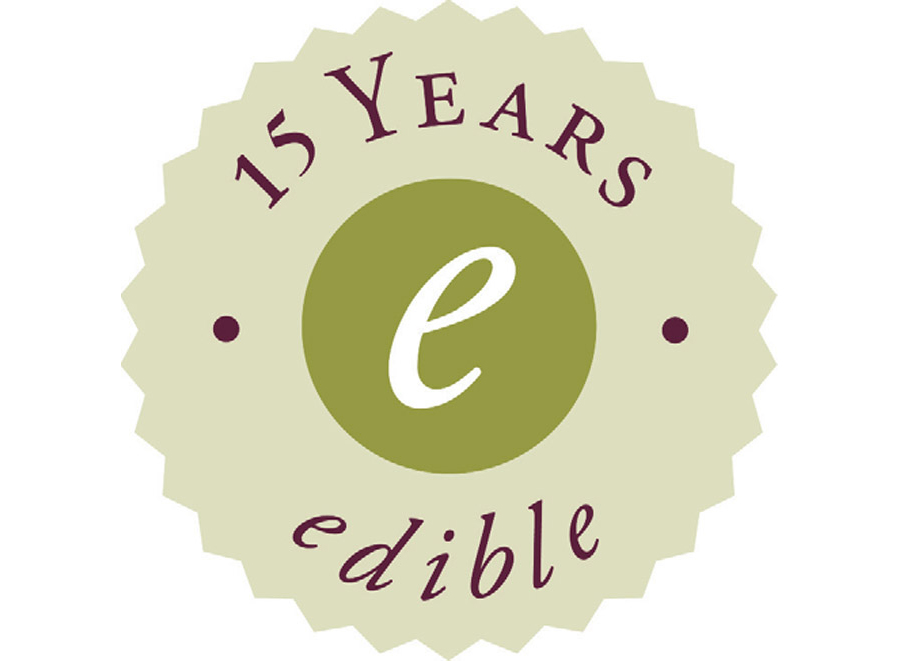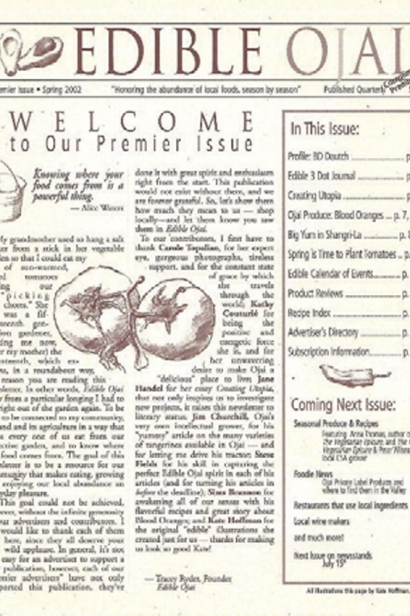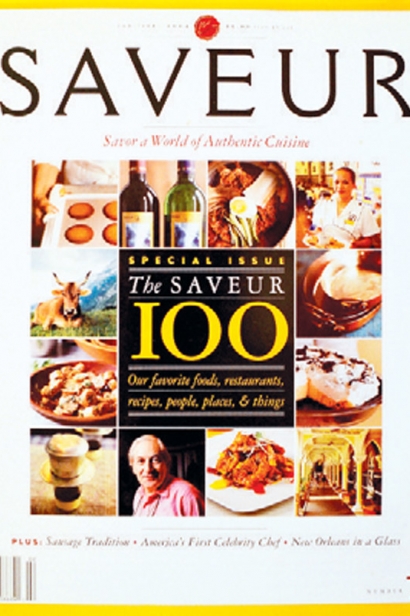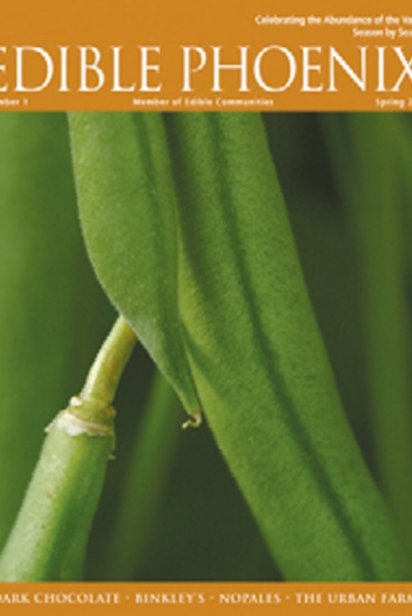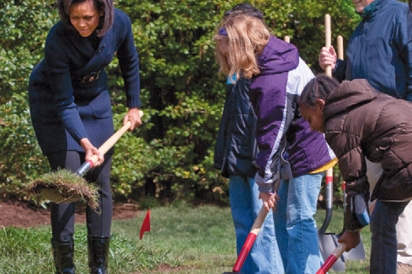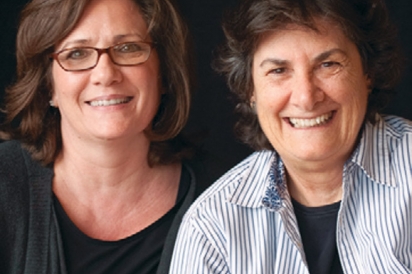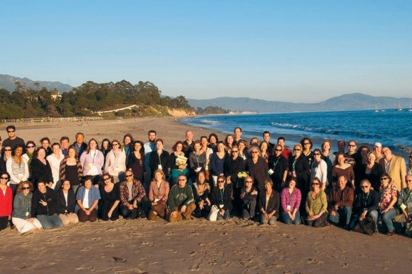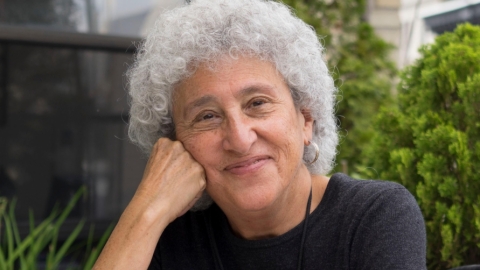15 Years of Edible Communities
With a credo of “If you want to eat local, it helps to read local,” Edible Communities has become the largest media company exclusively devoted to the local good food movement. Here are a few memorable milestones:
2002: Edible Ojai launches in California. The one-color, 16-page quarterly newsletter about food and its makers debuts with a print run of 10,000 copies. After one year, Edible Ojai has subscribers in 43 states.
2004: Saveur magazine features Edible Ojai in its “Top 100” January/February issue. As a result of that mention, Edible Ojai founders Tracey Ryder and Carole Topalian launch Edible Communities, a network of licensed magazines and websites devoted to celebrating local, seasonal food. Six “pilot” territories are identified; by year’s end, Edible Cape Cod debuts and is quickly followed by five other titles.
2004: Culinary luminary Julia Child dies.
2004–08: Edible Communities grows from seven to 30 magazines, all locally owned and operated by licensed publishers in their respective communities.
2006: With the directive to “Eat food. Not too much. Mostly plants,” Michael Pollan’s The Omnivore’s Dilemma is named one of the 10 best books of the year by the New York Times.
2006: Edible Phoenix debuts.
lo・ca・vore ● ˈlōkə ̩ vȏr/
2007: The New Oxford American Dictionary names “locavore” its Word of the Year. The word is defined as “a person who endeavors to eat only locally produced food.”
2008: Edible Radio makes its debut.
2008: Edible Toronto becomes the first Edible title to launch in Canada. It will eventually be joined by Edible Vancouver, Edible Ottawa and Edible Montreal.
2008: In August, Edible Communities is featured on the front page of the New York Times food section. During the following 12 months, the company grows from 30 to 60+ magazines.
2009: First Lady Michelle Obama starts a vegetable garden on the South Lawn of the White House to encourage healthy eating and sustainability.
2009: Chef Dan Barber is one of the most influential people in the world, according to Time magazine.
2010: The first annual Edible Institute, a two-day thought forum about the present and future state of local food, is held in Santa Fe, NM.
2010: The company’s first book, Edible: A Celebration of Local Foods, is published by John Wiley and Sons.
2011: Edible Communities is honored by the James Beard Foundation with its first-ever Publication of the Year Award. In announcing the award, the Foundation recognizes Edible publications “as a valuable resource for exploring the impact of regional food and agriculture from a grassroots perspective…. [The organization’s] body of work reflects excellence in the ever-changing world of food journalism.”
2012: Edible Phoenix wins an Eddy Award for Best Editorial – Historical.
2014: Edible Communities founders Tracey Ryder and Carole Topalian are named to Fortune and Food&Wine's list of the 25 "Most Innovative Women in Food and Drink."
2014: Stating that family farms "should be at the heart of all agriculture, food security and nutrition agendas," the United Nations declares 2014 the "International Year of Family Farming."
2015: Sales of organic foods reach $40 billion, up from $15 billion in sales in 2006, according to the Organic Trade Association.
2015: The USDA Farm to School Census shows that school districts purchased nearly $800 million in local food from farmers, ranchers, fishermen and food processors/manufacturers during school year 2013–14.
2015: Edible Phoenix celebrates its 10th anniversary.
2016: Edible Communities reaches 100 licensed magazines in communities across the United States and Canada. The community now prints 6 million magazines each year.
2016: The new and improved EdibleCommunities.com launches, featuring content from the organization’s local communities.
2017: Edible Ojai—now expanded as Edible Ojai and Ventura County—celebrates its 15th anniversary.


